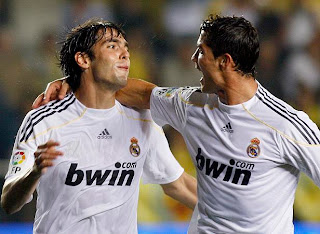Over the past few months I have taken to creating my own poll among my friends' señoras, asking which television channels they watch, which radio stations they listen to, and which newspapers they read, if any. We often talk about the struggle of power between El Pais and El Mundo, but I wanted to find out which news outlets really stood out among our host families.
First, I took to noticing my señora's habits in terms of television watching and newspaper reading. Although my host family is on the younger side (43 years of age, respectively), they are a very conservative household as opposed to most families that are of this age with young children. My señora reads ABC, although her husband is subscribed to El Mundo (and regularly gets Metropoli periodicals). Although she is very specific about the news that she reads, she is not so picky about the news that she watches. She'll flip through any news channel to avoid commercials or to watch the story she is most interested in (usually involving politics).
After asking the help of my friends (7 of them), I gathered the following data about their señoras' habits:
The most popular news channel among señoras was:
The most popular newspaper among señoras was:
The most popular magazine among señoras was:
The most popular radio station among señoras was:
(Note: most señoras said they didn't really listen to the radio or didn't have a favorite station but mostly liked to listen to the news on the radio)
The most popular sports periodical among señoras was:
(Note: most señoras did not read sports periodicals. In a few cases, their husbands or sons read Marca, and in a few other cases they said if they were to read a sports periodical, they would read Marca)
In conclusion, it seems as though most of our señoras seem to be going with the grain and choosing some of the more popular outlets to get the media they're looking for. They are very concerned with the news, especially foreign affairs and politics, and they do care about what is going on with the royal family and local celebrities as well as known foreign celebrities. They are not as into sports as their husbands, but they are knowledgeable about the subject, and even though most of them are conservative, they tend to read and watch more independent news.




























